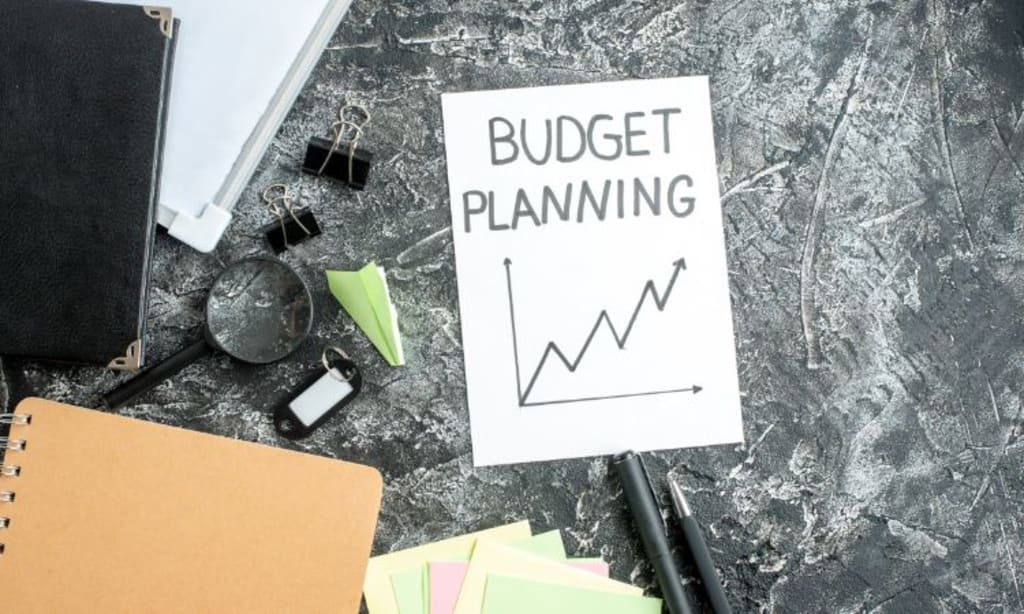How to Build a Successful Budget: A Step-by-Step Guide
step by step guide

Creating a budget can seem daunting, but it's one of the most empowering steps you can take towards financial freedom. A budget helps you understand where your money is going, ensures you’re not overspending, and allows you to save for future goals. Here’s a step-by-step guide to building a successful budget, complete with real-life examples to inspire you.
Step 1: Determine Your Income
The first step in building a budget is knowing exactly how much money you have coming in. Include all sources of income, such as your salary, side hustles, and any other regular payments you receive.
Example: Anna, a freelance graphic designer, has an irregular income. She averaged her earnings over the past six months to determine her monthly income. This helps her plan for months when work might be slow.
Step 2: Track Your Expenses
Before you can create a budget, you need to know where your money is going. Track all your expenses for a month, including bills, groceries, dining out, entertainment, and any other purchases.
Example: Mark, a recent college graduate, used a budgeting app to track his spending. He was surprised to find he was spending $200 a month on coffee and snacks. This insight helped him make more conscious spending choices.
Step 3: Categorize Your Expenses
Once you have a list of your expenses, categorize them into needs and wants. Needs are essential expenses like rent, utilities, groceries, and transportation. Wants are non-essential items like dining out, entertainment, and luxury purchases.
Example: Lisa, a single mother, divided her expenses into needs and wants. She found that by cutting back on her "wants," she could save an extra $150 a month. This money went towards an emergency fund.
Step 4: Set Financial Goals
Having clear financial goals can motivate you to stick to your budget. Set short-term goals (e.g., paying off credit card debt), medium-term goals (e.g., saving for a vacation), and long-term goals (e.g., building a retirement fund).
Example: James and Emily, a young couple, set a goal to save for a down payment on a house. They created a timeline and determined how much they needed to save each month to reach their goal within two years.
Step 5: Create a Plan
With your income, expenses, and goals in mind, create a plan. Allocate specific amounts to each category of expenses. Ensure your needs are covered first, then allocate money towards your goals, and finally, allocate money for your wants.
Example: Maria, a nurse, used the 50/30/20 rule to create her budget: 50% of her income went towards needs, 30% towards wants, and 20% towards savings and debt repayment. This simple rule helped her balance her spending and saving.
Step 6: Monitor and Adjust
A budget isn’t set in stone. Regularly review your budget and adjust as necessary. Life changes, and your budget should reflect those changes.
Example: Alex, a software engineer, reviews his budget every month. When he got a raise, he adjusted his budget to allocate more money towards his retirement fund and less towards discretionary spending.
Step 7: Use Tools and Resources
There are many tools and resources available to help you budget effectively. Budgeting apps, spreadsheets, and financial planners can provide valuable support.
Example: Claire, a teacher, uses a budgeting app that syncs with her bank account. This app categorizes her expenses automatically, making it easier for her to stick to her budget.
Real-Life Success Stories
Rachel’s Debt-Free Journey
Rachel, a marketing manager, was drowning in debt. She had student loans, credit card debt, and a car loan. She decided to take control of her finances by creating a budget. By cutting unnecessary expenses, like eating out and subscription services, and putting that money towards her debt, she was able to pay off $20,000 in two years. Rachel’s story shows the power of a well-structured budget in achieving financial freedom.
Tom’s Vacation Fund
Tom, an IT specialist, dreamed of taking a trip to Europe. He set a goal to save $5,000 in one year. By creating a detailed budget and cutting back on non-essential expenses, he was able to save $400 a month. Tom’s story demonstrates how a budget can turn dreams into reality.
Emily’s Emergency Fund
Emily, a graphic designer, wanted to build an emergency fund after a car accident left her with unexpected expenses. She created a budget that allowed her to save $200 a month. Within a year, she had saved $2,400. Emily’s story highlights the importance of a budget in preparing for life’s unexpected events.
Final Thoughts
Building a successful budget is a powerful tool for achieving financial stability and reaching your goals. By understanding your income, tracking and categorizing your expenses, setting clear goals, and creating a plan, you can take control of your finances. Remember, a budget is a living document that should adapt to your changing circumstances. With commitment and regular monitoring, you can build a budget that works for you and leads you to financial success. Start today, and watch as your financial situation transforms.
About the Creator
Enjoyed the story? Support the Creator.
Subscribe for free to receive all their stories in your feed. You could also pledge your support or give them a one-off tip, letting them know you appreciate their work.





Comments
There are no comments for this story
Be the first to respond and start the conversation.